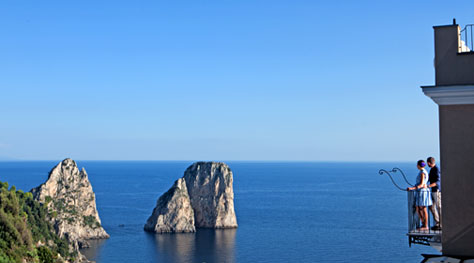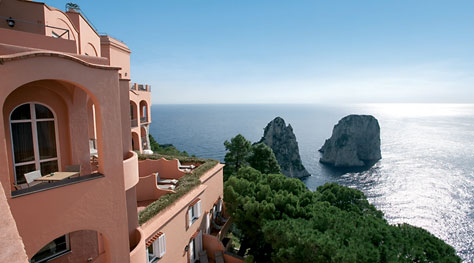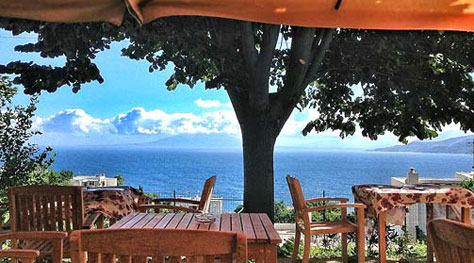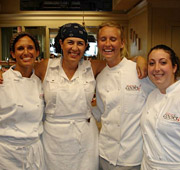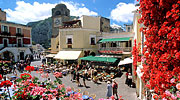Amalfi Coast taste alphabet
The gastronomic specialties of Italy's most beautiful stretch of coast
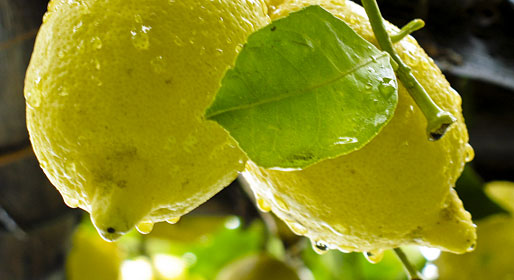
The A to Z of the Amalfi Coast kitchen
A for Anchovies. For gourmands, the treasure of Cetara, a small fishing village on the Amalfi Coast, is its "Colatura di Alici": a modern version of the Ancient Roman "Garum", cited in the recipes of Apicio. At Cetara the "colatura" is made exclusively with anchovies caught in the spring, left in salted water for 24 hrs, and transferred into casks where they are pressed between layers of salt. The liquid produced by the process of pressing and fermentation is filtered and placed in glass containers, and exposed to direct sunlight, before being bottled. This ancient elixir is typically used as spaghetti sauce and to add flavor to any number of maritime dishes. Cetara's "colatura di alici" can be purchased in the town's Cetarii shop.
C for Coniglio all'Ischitana. This flavor-packed meat dish typical of Ischia, should, ideally, be prepared using the island's "coniglio di fosso". Rabbit was once so common on the island that at one point Ischia risked being overcome by the furry creatures. As a consequence, rabbit was used in a great many of the island's dishes.
D for De Riso. A name of International standing, Salvatore De Riso is Southern Italy's best known pastry chef. Although his confectionary can be found in all the finest hotels and restaurants, it is still well worth paying a visit to the De Riso patisserie in Minori.
G for Gragnano. Gragnano pasta is named after the small town south of Naples where it has been made since the 16th century. The humidity and ventilation produced by the sea breeze provide the perfect atmospheric conditions for the production of pasta, and many of the town's family-run pasta companies have expanded into large-scale manufacturers. After a series of highs and lows over the centuries, today the traditional pasta companies of Gragnano, have formed the Pastai Gragnanesi cooperative , with the intent of protecting the brand and maintaining the quality of the pasta produced.
L for Lemon. This fruit, cultivated in the citrus groves clinging to the cliff edge terraces, is one of the symbols of the Amalfi Coast. Once upon a time, the lemon trees were grown beneath typical "pagliarelle", which were used to protect them from the wind and cold. Today, the pergolas, which were made with straw and chestnut wood, have been replaced by plastic nets. The celebrated Limoncello liqueur, the origin of which is contested between Sorrento, Amalfi and Capri, is made from the rinds of the lemons.
Just a few square kilometers and three varieties of lemon
- Sfusato of Amalfi
- Ovale of Sorrento
- Femminiello of Capri
N for "Ndunderi". A type of gnocchi originating from the town of Minori, "Ndunderi" is considered by UNESCO to be one of the oldest types of pasta in the world. In the times of the Ancient Romans it is though that the gnocchi were made with spelt flour and rennet. Today they are made with fresh ricotta and are typically served with a fresh tomato sauce. Best enjoyed in one of the area's traditional restaurants.
R for Ricotta di Tramonti. The town of Tramonti stands between the sea and the mountains, circa 7kms from Amalfi and a similar distance from Monti Lattari. Here the flocks of sheep are left to graze free and their milk is used to produce a ricotta laced with the aroma of herbs and the taste of the Mediterranean sun. To date, Tremonti has witnessed the birth of some 3000 pizza chefs, a veritable army of pizzaioli, posted all the way along the peninsula and beyond.
S for "Scialatelli". A long pasta typical of the Amalfi Coast, scialatielli are shorter than spaghetti, decidedly irregular in shape and particularly tasty when served with fish and seafood. Although dry versions of the pasta are available in a number of shops, nothing beats a plate of fresh scialatielli.
T for Torta Caprese. A wonderfully fragrant and deliciously moist cake made with chocolate and almonds and without the slightest hint of flour. Legend has it that the Torta Caprese was first created at the start of the 20th century, made by a baker from Capri, who, when asked to prepare a chocolate cake for three friends of Al Capone, got in such a fluster that he forgot to add the flour. An exquisite error which pastry makers have been making ever since.




